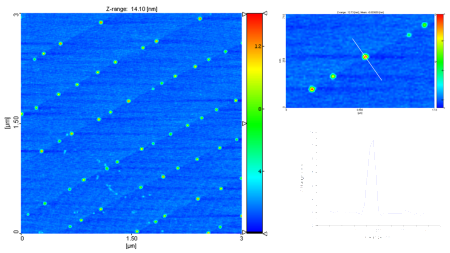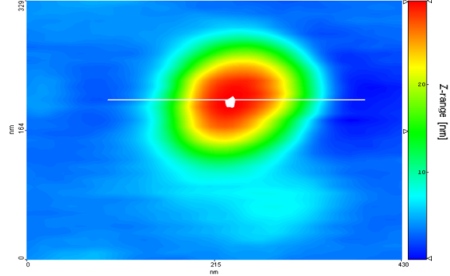High density protein nanoarray

Protein nanoarray technology is fast becoming an integral part of many drug screening programmes.
Approximately 60% of drug targets are transmembrane proteins, but current nanoarray technology involves attaching these proteins directly to the substrate, damaging the protein’s functionality and yielding data of questionable utility.
The invention
University of Oxford and Nippon Telephone and Telegraph (NTT) researchers have developed a method of creating transmembrane protein nanoarrays with the following key benefits:
-
no loss of protein functionality expected – proteins retain their natural conformation in a lipid bilayer and are not affected by the substrate
-
increased density of array elements – 10⁹ protein-bearing nanodots are covered by a 10μl droplet, allowing for a lower compound requirement than with existing arrays
-
lower manufacturing cost – unloaded nanodots self-assemble on a glass substrate; expensive lithographic processes used in current array technologies are not required

Firstly, gold nanoparticles self-assemble on a glass substrate (unloaded nanoarray, Figure 1)

Secondly, vesicles are formed with gold-affinity head groups (Figure 2; transmembrane proteins may be inserted into these)

Finally, the vesicle and unloaded nanoarray are brought together in solution, forming the loaded protein nanoarray (Figure 3).
Market
Although DNA array technology is well developed, the protein equivalent is still in its infancy.
Developments made by University of Oxford and NTT scientists show potential to deliver low-cost and high-density protein arrays via a self-assembly method, offering an excellent opportunity to companies engaged in proteomics and drug discovery.
The products are envisaged as arrays fully loaded with transmembrane proteins in known locations, or the unloaded arrays with a range of transmembrane protein-bearing vesicles in solution for the purchaser to load on to an array.
Patent status
The invention is the subject of a published patent application and peer-reviewed paper. Oxford University Innovation would like to talk to companies interested in developing the commercial opportunity. Request more information if you would like to discuss this further.
about this technology

